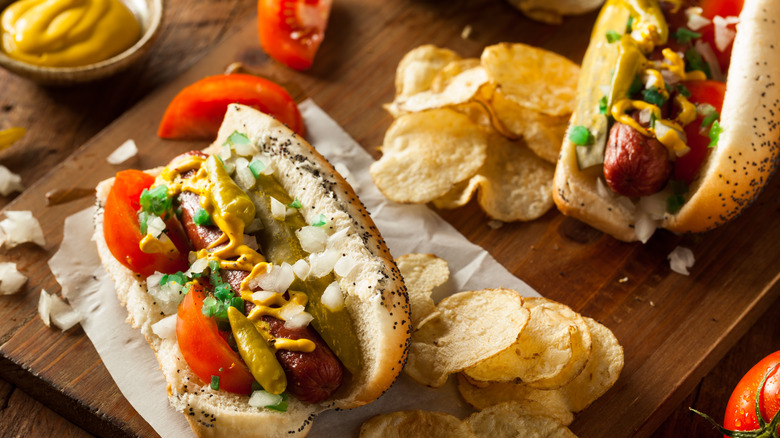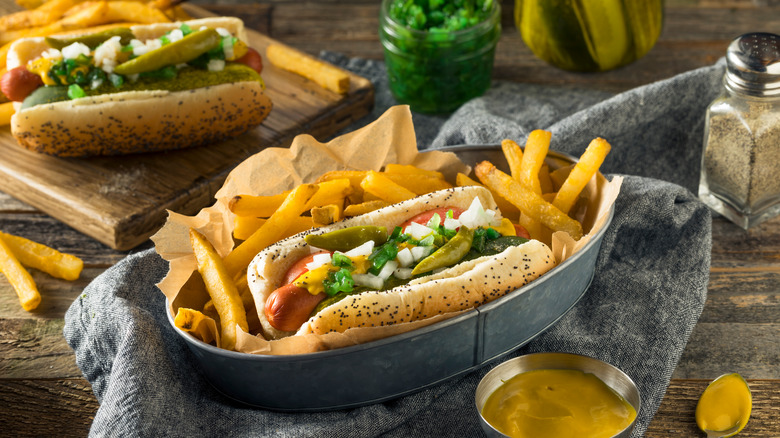How Chicago-Style Hot Dogs And The Great Depression Are Connected
We live in a world of bells and whistles. A world where everyday each facet of daily life gets more and more complex. Car insurance comes in bundles within bundles within bundles. Our devices are getting smarter, but the features we expect them to do are getting more complicated to figure out. Sure, sometimes it's good to have flair, to have something elaborate and show-stopping, but in a world where everything from trying to get a license to ordering out is getting more complicated — you just want something simple, minimalist even.
Enter Gene's and Jude's. Located at North River Grove, Illinois, this unassuming white-brick building stands in an almost comedically stark contrast to the hopping nightclubs and highly-praised eateries that call the Windy City home. The simple, no-frills plainness of the place is exalted in their website: "NO SEATS. NO KETCHUP. NO PRETENSE. NO NONSENSE." There is no mascot painfully trying to be relevant, screaming ads. There are no buzzwords to try and sound "hip." You are here for a hot dog, not a five-star meal.
Yet, behind these simple walls, there lies something that, for many food historians, is a delicious piece of Chicago history, way back from 1930s. While many of us know the Chicago-style hot dog as a juicy frankfurter in a poppy seed bun, slathered in relish, onions, peppers, pickle, and tomatoes, the Depression Dog — exactly what Gene's and Jude's serves — is the "bare bones" model of the famous dog.
The Depression Dog?
The "Depression Dog," differing from it's modern-day form, includes a skinny all-beef frank on a plain old bun, topped with yellow mustard, onions, hot sports peppers, and maybe some relish. It's served with fresh-cut, skin-on fries that either are wrapped up with the Dog, or tossed on top of it as if thrown with a hand that says "Works either way, right?" — an ultimate sign of simplicity.
The "Depression Dog" is believed to have its origins during the Great Depression (thus the name!), when vegetable cart owners would serve a hot dog and some fries with whatever vegetables they had laying around, with the now-defunct Fluky's being credited as the main inventors (via Serious Eats). The reason for this is simple, both historically and food-wise. In a time where the average American was bedeviled by a shortage of work and cash, they required something that was both cheap and filling. As Bill Savage, a "hot dog historian" and English professor at Northwestern, explains: "[A] ... nickle could get you a hot dog with all these condiments on it that made it something approaching a full meal" (via Block Club Chicago).
According to Hot Dog Chicago Style, it's been debated exactly how the Depression Dog evolved out of its simple origins, from the cultural influence of German and Italian immigrants and more, but one thing is for certain. For Gene's and Jude's and other hot dog purists, simplicity is beauty.

